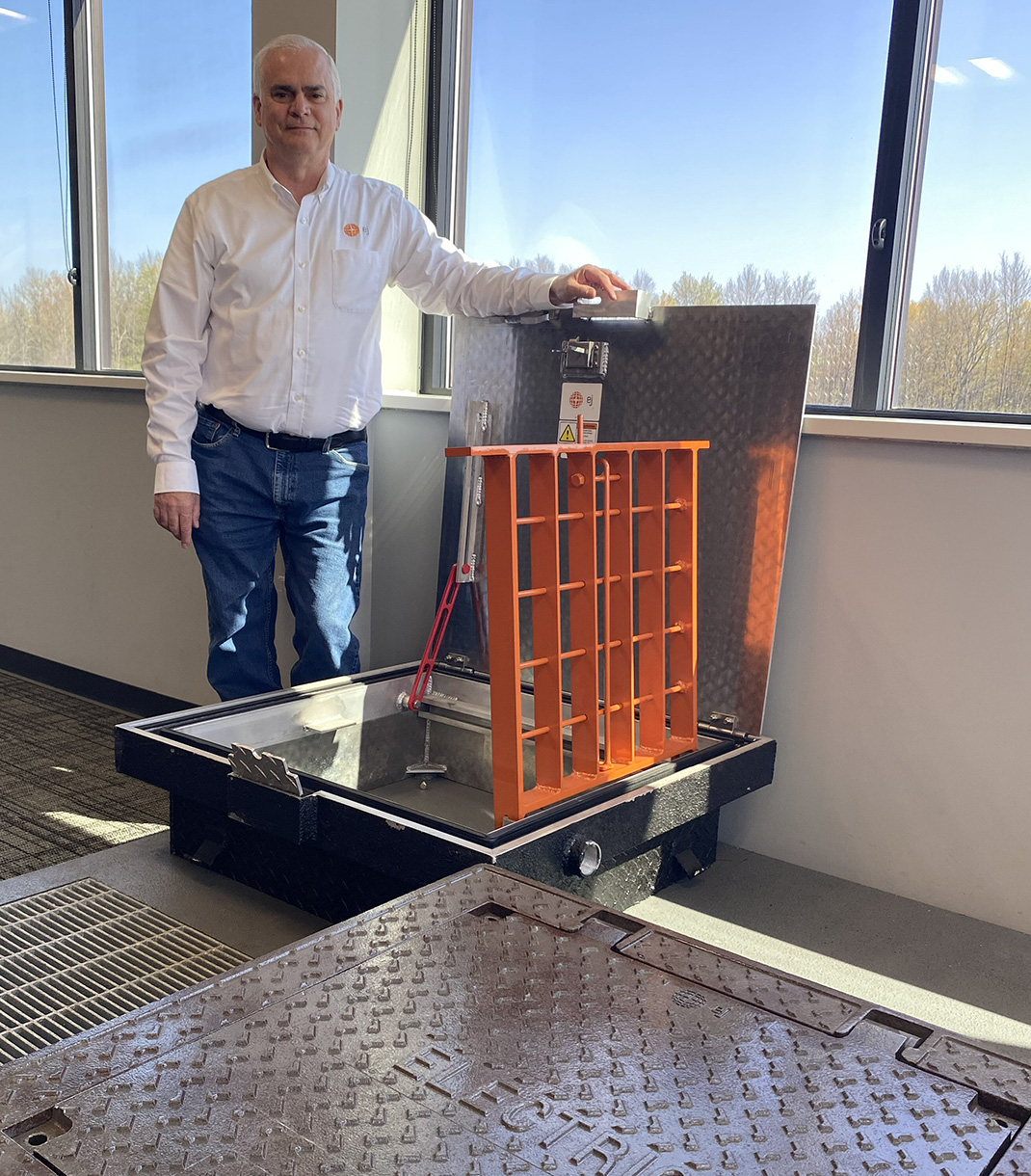Need a part? Here’s how the process works
By Deborah Jeanne Sergeant
Ever wonder how new parts and products are made? Local fabrication shop leaders shared an inside look at the procedure.
Many times, salespeople at job sites bring leads to EJ Co, Inc., in Schroeppel.
“We find out from the customer what the job is and create a new product request,” said Tim McKernan, facility manager.
The company’s staff of engineers take new product requests (NPRs) and design the requested part or product. After developing the price quote, a sold design may require a prototype or may not, depending on the complexity of the project and the customer’s desires.
“For the Big Dig project in Boston, the original drainage grates were supplied by a foundry that’s no longer around,” McKernan said. “They wanted replacement grates with a special locking device. We submitted a prototype, and we’ll probably build hundreds of those to replace grates that have fallen apart.”
Typically, a project can be completed without a prototype, with drawings and revisions as customers spots changes and has new ideas on what they want. EJ revises the drawing until approved. Then it’s time to build.
“Sometimes they don’t know what they want,” McKernan said. “We pride ourselves in that we have global expertise with local knowledge, like NYDOT and city of Syracuse. The customer may not know the regulations. We take ‘napkin drawings’ and turn it into something that meets all of the specifications. We may design a grate around things like ADA, bicycle safety, load safety so trucks can drive over it.
“There are security issues a lot of agencies have because they’re worried about someone vandalizing their infrastructure like a water system, electrical system or fiberoptics. They don’t want people messing with it. We would propose based on all of our knowledge different security and locking devices that can globally know things that haven’t quite come to the US yet.”
One example McKernan cited was in Europe during the recent Olympic Games. Concerns about potential terrorist attacks prompted greater security strategies to prevent a tragedy. Of course, nothing is foolproof. That’s why measures to slow an attack help increase the chances that someone committing a crime will get caught before they can become successful.Recent floods in New York have prompted EJ to develop a safer manhole cover, SAFEHATCH, which provides a safety grate below the cover to prevent accidental falls.
John Sharkey IV, president of Universal Metal Works in Fulton, encourages anyone who needs a part or project to know “the more information they’re able to provide the better.”
Sometimes, a firm isn’t quite sure what fabricated part or product will solve their problem. But Sharkey said that’s not a problem.
“We have a good team here to help them know what they’re looking for,” he said. “We can design it in a way that is more efficient to build.”
That can save the client time and money.
Oftentimes, a fabrication project begins with a phone call from a potential client, followed by emailing prints and drawings back and forth to generate an estimate.
“We work from packets of detailed drawings to sketches on napkins; we work with anything,” Sharkey said.
Universal’s engineers can help develop a prototype; however, Sharkey said that typically the first model the company builds is the one the customer ends up using.
“Then we make it and are on to the next project,” he said.




